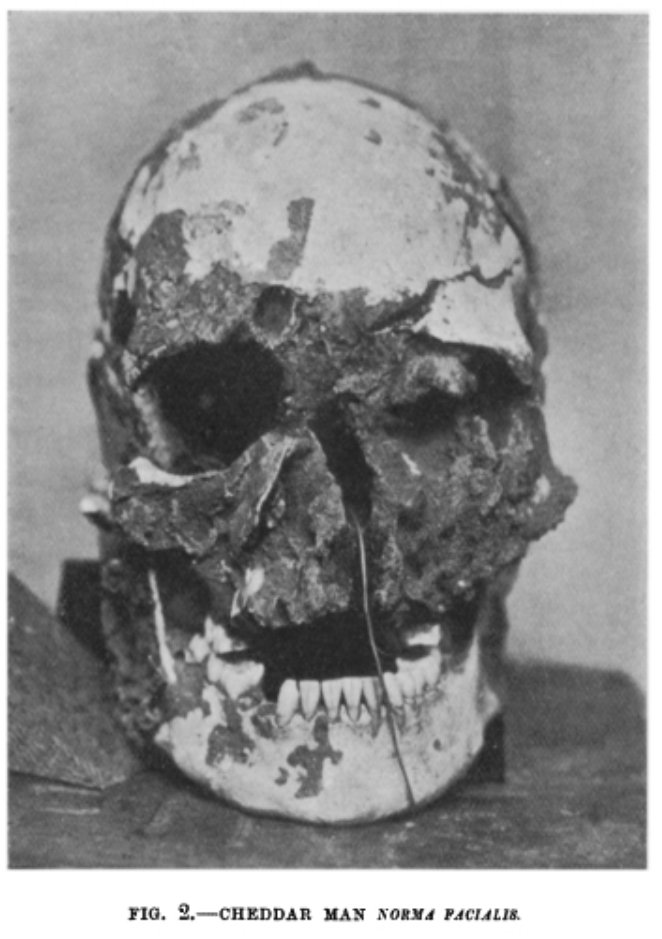A DNA analysis has revealed the facial characteristics of a 10,000 year old human skeleton, known as ‘Cheddar Man’. The male skeleton belonged to the first population to recolonise the British Isles after the most recent ice age, and is thought to have had dark brown-black skin, blue eyes, and dark, curly hair. Interestingly, this reveals that the lighter skin pigmentation seen in many modern Europeans is a much more recent adaptation than previously thought.
The skeleton was discovered 115 years ago in Cheddar Gorge in Somerset. This is the oldest British skeleton to have its genome sequenced. The study is a result of a collaboration between the Natural History Museum, where the DNA was extracted, and University College London, where researchers carried out a genome analysis. Artists and specialists in paleontological model-making, Alfons and Adrie Kennis, then combined the genetic findings with skull measurements to carry out a facial reconstruction.
It is thought that the first Homo sapiens evolved in a single speciation event in East Africa, before spreading across the globe over evolutionary time. This constitutes the ‘Recent African Origin model’ of early human evolution and migration. The route taken to Europe is still hotly debated: Some archaeologists believe that early humans travelled through the Middle East, whereas others think a journey through what is now Russia is more likely. Ultimately, anatomically modern humans reached Britain 40,000 years ago, but were driven out twice by cold glacial periods. The British Isles were finally settled permanently around 11,000 years ago.
While a rare combination today, the dark skin and blue eyes seen in Cheddar Man probably appeared frequently in the population when he was alive. Skin pigmentation is controlled by multiple genes and arises as a result of melanin, a pigment produced by melanocyte cells in the basal layer of the epidermis.
Early hominin species were covered in dark hair with light skin underneath, but an adaptive loss of hair to keep cool soon resulted in a strong selective pressure for dark skin, in order to protect sweat glands and sub-cutaneous blood vessels from damage by UV radiation. Dark skin was also favoured to protect against the degradation of folate by light; Folate deficiencies can lead to severe or lethal neural tube defects at birth.
As humans migrated out of Africa, away from the equator, UV radiation became less intense and humans underwent depigmentation. Vitamin D deficiency was a notable selection pressure, as UV light is required to form this essential vitamin in the body. This occurs more efficiently in those with paler complexions. Light skin was probably brought to the UK around 6,000 years ago, by a wave of migration from the Middle East. These people were likely farmers with a vitamin D deficient, cereal-based diet.
Additionally, analyses found that Cheddar Man was lactose intolerant, revealing that the ability to digest dairy products must also have evolved later on. Furthermore, comparisons of mitochondrial genomes revealed that approximately 10% of modern Europeans share the same type of mitochondrial DNA with Cheddar Man.
The study has shed a great deal of light on the evolution of our ancestors. However, many of the researchers believe this knowledge also has wider implications “in a world where we are unusually preoccupied with skin pigmentation”, according to Steven Clarke, director of an upcoming documentary. Professor Mark Thomas, a geneticist at UCL agrees: “It becomes a part of our understanding, I think that would be a much, much better thing.” The story has garnered much attention on social media, however the best way to learn more about Cheddar Man would be to tune into ‘The First Brit, Secrets Of The 10,000-year-old Man’, which will be premiered on Channel 4 as part of its Secret History series of documentaries.

